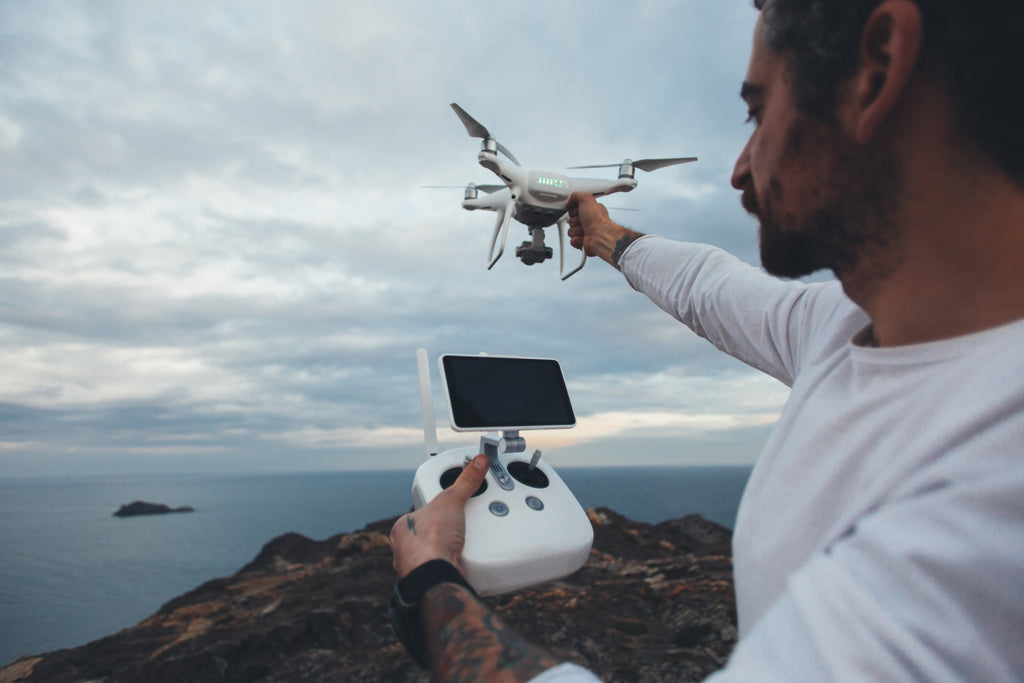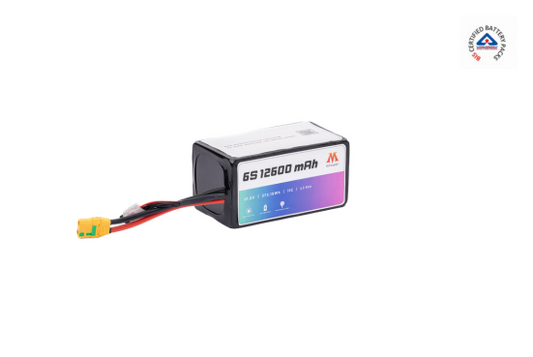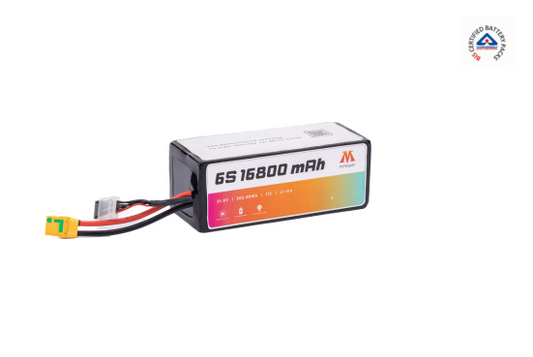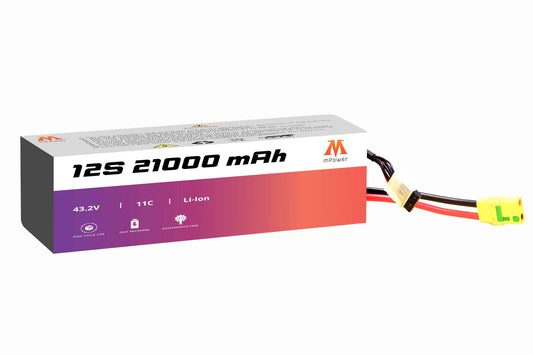
Nowadays, modern drones are piloted remotely and equipped with technologies like GPS, the drone industry has witnessed rapid evolution in the past few years with advancements in technology. From military applications to agricultural utilization, drone versatility, maneuverability, and their ability to access difficult areas are driving their adoption across various industries. So, let’s explore the applications of drone technology across a multitude of sectors.
But before that let’s have a brief overview of the power source of the drone i.e. drone battery.
The battery for drones serves as the foundational element of drone technology, defining its flight time, payload capacity, and overall operational efficiency. For now, lithium-ion (Li-ion) batteries are leading the domain of the drone battery. Currently, Li-ion batteries dominate the market as the primary power source for commercial drones. Due to their favorable features such as
- High energy density
- Low weight infrastructure
- Rechargeability
- Proven performance reliability
This makes them the absolute power source of modern drone technology. However, solid-state batteries are emerging as promising solutions against the limitations of lithium-ion batteries. In solid-state batteries, liquid electrolytes are replaced by solid electrolytes, which reduces the risk of explosion in the batteries. Also, solid-state batteries are considered to have high energy density in comparison to lithium-ion batteries. These significant capabilities of solid-state batteries make them promising solutions in the drone battery industry.
Now, let’s navigate the applications of drone technology across different sectors
Exploring the Diverse Applications of Drone Technology
The applications of drone technology are rapidly expanding, encompassing a wide range of sectors, like
Agriculture
Drones are revolutionizing agriculture practices by facilitating precise spraying and field monitoring. Drones for the agriculture industry are equipped with high-resolution cameras and specialized sprayers. This enables them to spray pesticides and herbicides on target spots while reducing waste and environmental impact. Moreover, drones equipped with multispectral sensors can capture detailed aerial images. This allows farmers to access crop health, identify potential issues, and optimize resource allocation. Overall drones help farmers to ensure the health of their crops.
Construction
Drones are transforming the construction industry practices also through progress monitoring site surveying and mapping. In progress monitoring, the drone provides aerial visuals of construction sites. This enables access to real-time progress tracking and facilitates better communication and collaboration among stakeholders. Also, drones facilitate site surveying and mapping by efficiently and accurately capturing the aerial data of construction sites. This real-time data helps stakeholders to improve site planning, optimization of design, and cost reduction through informed decision-making.
Delivery
Drone delivery is paving the way in revolutionizing the delivery domain, by offering faster and more efficient deliveries and enhanced accessibility. Drones can bypass any traffic congestion and reach remote locations quicker than traditional transportation methods, particularly in urban areas. This enables drones to provide faster deliveries with efficiency. Furthermore, drones can deliver essential supplies to disaster zones of remote communities effectively. This results in overcoming geographical limitations and improving accessibility to critical resources.
Photography and Videography
The drone also innovates the sphere of photography by providing unique perspectives and angles through aerial photography, enhancing safety measures in critical photography landscapes, and improving the quality of images. With drones capturing aerial images and video became easy which was considered impractical before, offering breathtaking shorts of landscapes, events, and cityscapes. Drones also access dangerous or difficult-to-reach locations for photography. Besides, they capture large landscape shots efficiently saving time and resources that were utilized in traditional photography methods.
Disaster management
Drones are playing a crucial role in search and rescue operations of disaster management. This is by locating missing persons and assessing disaster damage. Thermal imaging cameras on drones can assist in locating the missing person in disaster zones, dense forests, or any other challenging environment. Besides, the drone also offers aerial images of the disaster zone. These aerial images help emergency responders to assess the extent of damage due to disaster and prioritize appropriate operations of disaster management.
The Future Landscape of Drone Technology
Drone technology is constantly evolving and several trends and technologies are shaping its future, like
Currently, lithium-ion batteries dominate the drone battery market but solid-state batteries are emerging as alternative promising solutions. This revolution in drone battery technology offers the efficiency of drone technology with efficient power sources. Also, the efficiency of battery for drones could also lead to much more widespread adoption of drones in various sectors.
Another is regulations and standardization which address the safety concerns related to drones. As they are essential to ensure airspace integration and ongoing development of commercial drone operations.
Specialized drone designs and functionalities catering to the specific requirements of various industries. This leads to an increase in the efficiency of drone applications for various purposes in different sectors.
Concluding Remark
Drone started mainly for military purposes, gaining popularity in various sectors due to their features and functionalities. From inspecting infrastructure to delivering packages to analyzing crop health, they are bringing revolution in every applicable industry. As technology keeps advancing, drone technology and its application will also modernize. mPower, a renowned drone battery provider partaking in this revolution by providing reliable and efficient lithium-ion batteries as well as solid-state batteries for optimal drone functionality. Because the battery of drones is the driving force of drone technology along with innovations, thus always opt for robust batteries like mPower batteries for effective and efficient drone operations.












